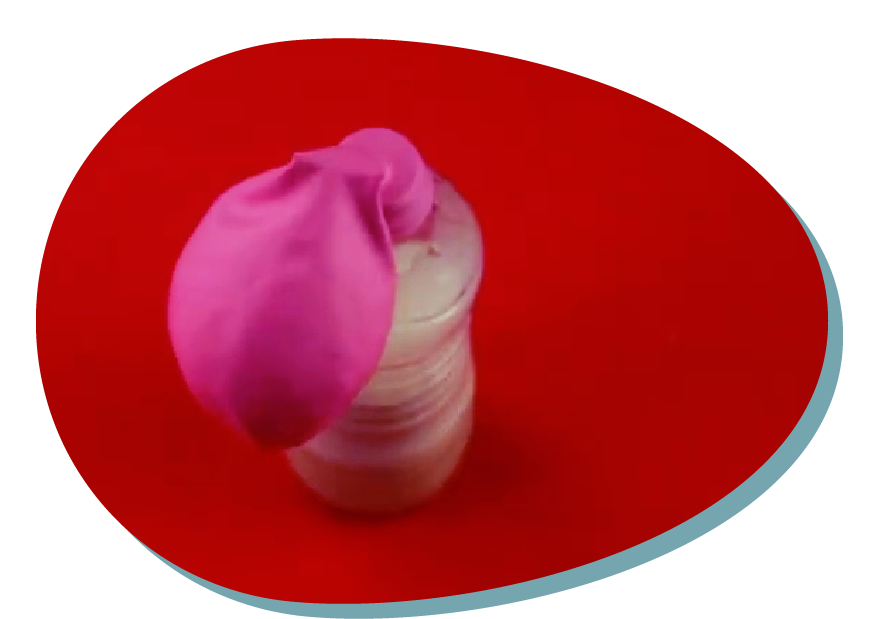How to inflate a balloon with yeast? Investigating the properties of yeast
Type of resource: video You Tube
Web address Adres internetowy – https://www.youtube.com/watch?v=nqnvNdU-wyE
https://www.youtube.com/watch?v=9Lxl-SQh9kk
Language: Polish, English
Description
Experiments – using yeast to inflate a balloon. Testing how yeast works in different environment, mixed with differetn substances.
Scientific concept introduced
Yeast, unicellular fungi, sugar fermentation, carbon dioxide, temperature
Creative and critical thinking
Creative thinking: designing new experiments
Mathematical reasoning
measuring substances, comparing, classifying, measuring time
Scientific thinking
formulating problems, predicting, verifying hypotheses, observing chemical reactions, drawing conclusions
Learning how to learn
motivation to learn, emotional involvement, positive self-image as a learner
Additional
A/ Oral language development – Communicating, Wzbogacanie słownictwa;
B/ Teamwork;
C/ Hand-eye coordination, fine motor skills – precision in movement.
How to inflate a balloon with yeast? Investigating the properties of yeast
Overall aims
• Understanding the nutritional properties of yeast
• Defining the concept of sugar fermentation by experimenting with yeast – using yeast for baking bread
• Developing the ability to observe and draw conclusions
Vocabulary – keywords should be understood
Yeast, unicellular fungi, sugar fermentation, carbon dioxide, temperature
Expected learning outcomes (operational aims)
The child:
• describes the fermentation process.
• observes the course of the experiment
• experiments with yeast in different situations
STEM skills – to which the learning unit is related to
CORE STEM SKILLS
Scientific thinking:
formulating problems, predicting, verifying hypotheses, observing chemical reactions, drawing conclusions
Mathematical reasoning:
measuring substances, comparing, classifying
Learning to learn:
motivation to learn, emotional involvement, positive self-image as a learner
ADDITIONAL SKILLS
Communicating;
Teamwork
Hand-eye coordination, Fine motor skills – precision in movement
Teaching methodologies/activity outline
1. Creating a problem situation
Ask the children to investigate the yeast with senses: watch it, smell it, taste it. Discuss: What is yeast used for? What is yeast? (you can prepare 2 different kinds of bread for comparing the taste: yeast bread and bread without yeast). Compare the taste and describe it.
2. Problem question: What to do to inflate the balloon using yeast?
3. Formulating hypotheses: note the children’s predictions
4. Verification of hypotheses
Conducting the experiment: children work in small teams.
Ask the children to prepare two bottles of different sizes. Pour a little warm water into each one, add yeast (about 0.5 grams), a teaspoon of sugar. Shake the bottles clogging the opening. Put one balloon on both bottles and observe – What do you think will happen? Children can use the stopwatch to measure the time.
5. Drawing conclusions – introducing the concepts: fermentation, yeast.
6. Additional activities related to children’s questions about the conditions that will allow the balloon to be inflated and further experimenting
• Will the balloons be filled if we mix yeast with salt and flour instead of sugar?
• Will the balloons be filled if we use cold water? How much time is needed for that?
• How much yeast do we need to fill a balloon using bottles of different sizes?
• How long will the balloon need to inflate if we place it on a small bottle and a large one?
You can bake yeast bread with your children.
Assessment of learning
Suggested questions:
What is need to inflate a ballon?
What conditions are necessary to initiate the yeast fermentation process?
Equipment and materials to be used in learning unit (tools, ingredients etc)
For each team: 2 bottles of different sizes; 2 balloons, a teaspoon, a tablespoon, yeast, sugar, warm water.
Kind of setting
classroom
References – source
Polish version: http://kitchenlab4kids.eu/?p=2557
How to inflate a balloon with yeast? Investigating the properties of yeast
1. Usefulness for STEM education – integrating content of different disciplines
Cross-curricular character of the resource

The range of S-T-E-M subjects included

The presentation of possibilities of including artistic activities (STEAM approach)

2. Expected learning outcomes
Consistency (links) with preschool core curriculum

Communicativeness of description

3. Methodology of teaching
Clarity, communicativeness of instructions for teachers

Meaningful learning – using practical life problems

Original idea

The level of ease in implementing the methodology to preschool age children

The level of ease in preparing necessary ingredients, materials and equipment needed

4. Sustainability
Ecological characteristics of materials/ results

Supporting healthy eating habits

Low ecological footprint

Possibilities of inclusion (respecting cultural diversity and food intolerances)

5. Class management
Using differentiated forms of work – individual, team work etc.

Individual work

Team work

Whole group
6. Time management

Short activity (10-15 minutes)

Medium activity (20-30 minutes)

Long activity (1 hour or more)

Very long activity (1 day or more)

